historical-military events
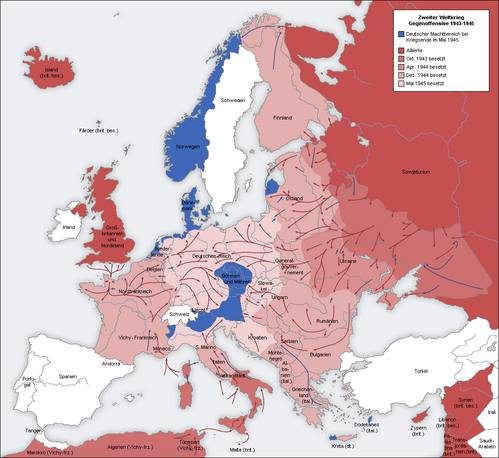
Until the last day of the war, and in some cases even after that, entire nations remained prisoner of the Nazis: Norway, Denmark, Italy and northern Yugoslavia, much of Czechoslovakia, the Channel Islands and some enclaves in French territory, such as the ports of Lorient and St Nazaire, which surrendered on 9 May 1945. The populations of each of these territories lived experiences between the terrible and atrocious, but one in particular deserves to be remembered, because almost unknown: the Dutch one.
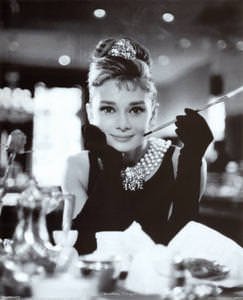
Between November 1944 and the following May, 4.5 million people went through an ordination not unlike those, taken as icons of Nazi barbarism, Jewish ghettos from Eastern Europe, Warsaw, Lodz and others. During those six months, the infant mortality rate doubled in the Netherlands, and tripled that of infants. Twelve thousand people died of hunger, another 20-30 thousand as a result of the allied air raids against German missile bases, 5-7000 in prison camps, at least 30 thousand in the working camps. Of the 2800 Dutch civilians killed in retaliation by the Germans, 1560 were shot or hanged in that gloomy winter.
What the Dutch called De Hongerwinter, the Winter of Hunger, is probably the only famine that occurred in recent times in a modern country and already started post-industrialisation at the time. The well-documented experience has allowed scientists to have a clear and meticulous picture of the effects of food shortages on human health. It was thus discovered that children born to pregnant women at the time of famine were more likely to develop diabetes, obesity, cardiovascular disorders, microalbuminuria and other metabolic diseases. The children in question were, logically, smaller than normal, both at the time of childbirth and once developed. But the surprise came when they were able to study their children, and it was discovered that they too were smaller than normal, as if famine had triggered an epigenetic mechanism. Other research has shown that babies who were in the second trimester of pregnancy of mothers during famine showed a high incidence of schizophrenia and borderline disorders, as well as an increase in cases of autism.
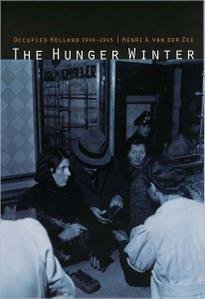
In 1939, as in 1914, the Netherlands had attempted to save itself from the conflict with a declaration of neutrality, but Hitler was not the Kaiser, and his armies in May 1940 put an end to all illusions. And yet, after the military defeat and flight of the royal family to London, life returned surprisingly normal, in the land of windmills; the institutions, and also the civilian population, accepted the German authority without any particular difficulty. There was a small resistance movement, but most of its activity was concentrated on saving the demolished allied aviators: the land planted and relatively bare was not suitable for insurrectionary activity. Opponents preferred to leave the country illegally rather than seek a secure death in the Resistance ranks.
Although Anna (in fact Annelies Marie) Frank and his family members managed to escape the Nazis for over two years in the attic of Amsterdam, the brutal reality was that practically all Dutch Jews were identified, deported and killed. Of the 117 thousand deported, only 5500 returned to their homes, and a total of 20 thousand survived the Endlösung der Judenfrage. When they started to rake the Jews,"recalls a Dutchman who was 22 years old," people said: it's not possible, I can't believe it, they can't do such a thing. But after a while they made us the habit ".
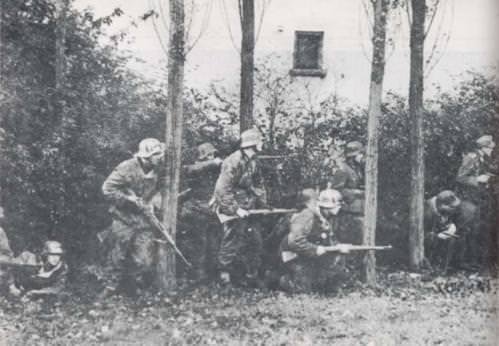
For the majority of the population, life continued in a normal way. There was no tea, there was no coffee, and some were in danger, but a lot of other people continued to cycle on Sunday with the family, playing tennis, eating was not missing. Some of us were surprised by the helpfulness and courtesy of the Germans, even the SS ". And the Dutch reciprocated that courtesy, 25 thousand of them fought for the Wehrmacht, while less than half of them wore the uniform of the Free Holland. In a report sent to London by the Secret Services in 1944, we read "the discovery that liberation would increase difficulties due to the proximity of the front and the fighting, has been a cause of serious disappointment among a large percentage of Dutch citizens, creating a vast band of discontent that could lead us to consider Dutch civilians as hostile".
The truth, one of the hidden truths of the Second World War, is that most Dutch people reluctantly accepted their fate as "freed". We did not pass too badly, nothing to do with what the Russians or Poles had to suffer, and even the French, the curfew of the 20's was a simple nuisance, nothing more ". The reality is that the Netherlands was perhaps the most instinctively ordered bourgeois society in Europe, respect for the established authority, whatever it may be, was absolute. And the Germans treated those who bent their heads in a civilised manner. A 20-year-old Dutch woman recalls that German officers always gave way to the ladies on trains and public transport in general, and when she was hit by a lorry driven by a crumbling soldier, the commander went to the hospital with flowers and chocolates and apologised deeply for what had happened.
However, it would be wrong to exchange the general acquiescence of the Dutch with a genuine enthusiasm: when the German Governor General, the hated Arthur Seyss-Inquart (Seyß-Inquart, according to the old handwriting), requires all university students to sign an oath of loyalty to the Nazi regime, only a small minority would obey. All the others had to abandon their studies.
Left. Arthur Seyss-Inquart, Reichskommissar of occupied Holland. The photo was taken during the Nuremberg trial, at the end of which it will be sentenced to death. Judgment given on 16 October 1946
On 17 September 1944, the first day of the Market Garden operation, 28 of the 30 thousand Dutch railwaymen went on strike, blocking the communication routes. The German reaction was harsh, the leaders of the strike were imprisoned and died, some under torture and others shot. The partisan activities were responded to with the same ferocity as in other occupied territories. The murder of an Abwehr captain on 23 October in Amsterdam was punished with the shooting of 29 hostages. On 4 November, the Germans blown up with Heusden City Hall, killing 134 people who had fled from their homes destroyed by an allied bombing. The failure of Market Garden and the stagnation of the front led to a brutal crackdown by the occupiers, also due to the feeling of having been betrayed by the people who had treated so much civilization. Add to this that the fighting had partially destroyed the road network making it difficult to connect and transport food, that almost all the remaining rolling stock surviving at Market Garden had been prescribed by Wehrmacht for exclusively military use in order to transport troops to and from the front, and that the winter 1944-45 was very harsh.
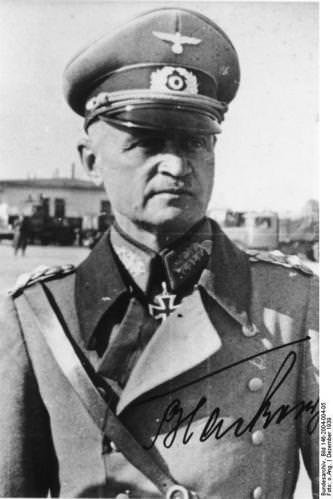
The situation deteriorated rapidly. In Amsterdam, there was only gas for ninety minutes a day, trees were knocked down, fences were broken, railway and tram sleepers were split, the pieces of furniture were torn apart, even the doors disappeared, the dead were removed from the coffins to use wood to warm up. No trams, no telephone, no electricity, for whatever you did endless queues. Long walks were avoided in order not to consume the shoes, which are now quite impossible.
In November, the weekly ration of food had fallen to 300 grams of potatoes, 200 grams of bread, 28 grams of legumes, 5 (c-i-n-q-u-e) of meat and as many of cheese: a total of about 900 calories, a third of what was indispensable in that cold winter. They ate soup of nettle, husk bread; dogs and cats, and even mice and pigeons disappeared quickly, devoured by anyone who could take them.
The Dutch Prime Minister in exile, pleaded with Bedell-Smith to release his country before the arrival of winter, while Prince Bernard of Holland, head of the Dutch Free Holland forces, attempted the same work of persuasion in London. Eisenhower replied coldly that the allied strategy had to be guided by military criteria, not by political considerations or, worse still, humanitarian considerations.
The faces of hunger
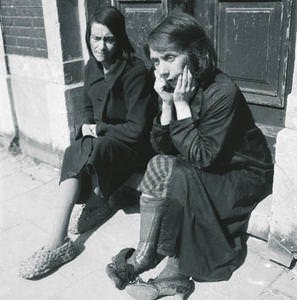
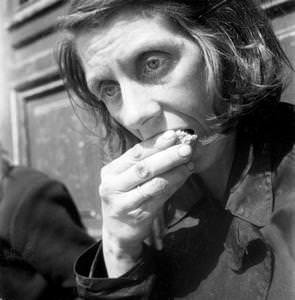
Meanwhile, with the approaching front and similarly to what happened in other countries, there was a boom of enlistment in the Resistance: before Christmas, there were, in the country of windmills, 5000 partisan fighters, supported by at least 30 thousand informants, couriers, clandestine typographers, in addition to a very well organized escape network, which managed to save, often with inventiveness and courage to make a fictional story pale, the last Jews and almost all the allied pilots killed in Dutch territory. And until the very end, the Germans mercilessly killed anyone suspected of being part of the Resistance. For years we had listened to the German soldiers marching through our streets singing their hymns. In the winter of the 44th, nobody sang anymore. We understood that something had broken irremediably.
A nation of ancient civilization is threatened with destruction by Nazi barbarity,"said the Resistance in London in January 1945. We are asking for help from the free world. We will endure ". But Europe was full of people who were crying out loudly to be saved from Nazi barbarism, and the Western allies, who were already struggling to realise the Jewish case, devoted very little attention to the Dutch one. Churchill, Roosevelt and Eisenhower were unanimous in their opinion that everything had to depend on the defeat of the Third Reich, the source of all evil: distracting oneself from that objective in order to bring relief to a category of victims of Nazism, whatever it might be, could only distract from the ultimate goal, ultimately making Hitler's game. Maybe they were right, but it was hard to accept for those who were dying of hardship.
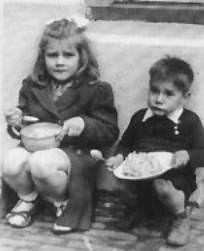
The "unattainable closeness" (the words of Henry van der Zee in his book) of the allies was an authentic torment. The roar of artillery was near, a few kilometres from the houses, and it wasn't until day that the allied fighters didn't go down to gunships flying grazing trains, vehicles, even the bicycle soldiers. People looked envyly at the planes returning to England, where the crew waited for eggs, sausage, coffee and orange juice. A B17 that fell into a canal, was attacked by a crowd of people looking for chocolate, candy, chewing gum, condensed milk: sixty years later, Ted van Meurs still remembers that he saw one of the participants in the plundering of a bar of chocolate without even removing the tin that wrapped it. On Christmas Day 1944, dozens of geese were hung up in the windows of the kitchens of the German command of Amersfoort, deriding the hungry population, which were then consumed by the Wehrmacht soldiers. The limbs amputated to the wounded were thrown out in the street so that the hungry could feed on them, even if the Dutch deny that they never happened. The International Red Cross sent supplies of food, but the Nazis were doing everything in their power to prevent it from being distributed. The Dutch remembered how, in 1918, when Germany and Austria were hungry after defeat, many German and Austrian children were sent to Holland to be treated and fed. And who knows, it was said, that among today's hungry people there were not some small children of that time.
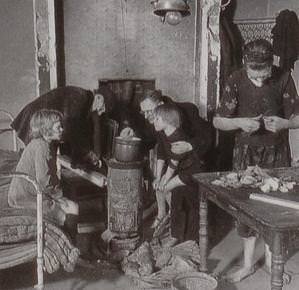
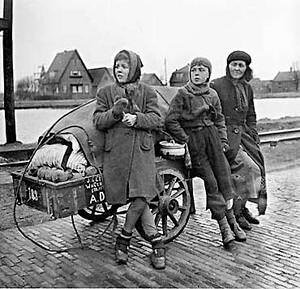
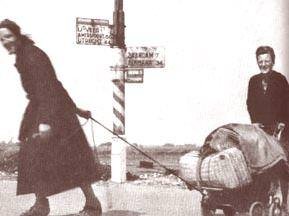
The gimmicks, such as stealing turnips and carrots from the neighbors' vegetable gardens, or trying to give the shopkeeper confidence that he had already delivered him the rationing voucher, had become a lifestyle. You were cycling around the countryside in the so-called Hongertochten (hunger marches) in search of some farm to ask for food in exchange for jewelry, watches, brooches, furs, fine clothing. Sometimes the bicycle was tied to a cart on which the furniture to be exchanged was loaded, precious furniture and antiques clocks passed from hand for a handful of potatoes or some butter or some egg.
In January, the daily ration fell to about 500 calories. Whoever is hungry cries out,"wrote a newspaper on 30 January," but whoever dies of hunger is silent. A deep and gloomy silence had fallen on Holland. People were shut down at home to save energy, schools were closed because of lack of heating, industry and commerce. In silent streets (only the Germans and collaborators had motor vehicles), heaps of rubbish swarming with mice were built up, as there were no means of removing them. Exhausted turnips and carrots, people began to feed on tulips. In that winter, more than 150 million were consumed. Take one litre of water ", recommended a recipe," an onion, six bulbs, salt, a teaspoon of oil and the surrogate of curry. Pour the onion into the oil with curry, add the water, and when it boils, throw it into the bulbs. The result was simply creepy, but it provided some calories and a handful of vitamins.
Jan de Boer, one of the nine children of a university lecturer in The Hague, noticed one morning from the window of his house a macilous horse defecating on the snow. Shortly afterwards he was amazed to see a passerby descend almost dive from the bicycle, crouching and rumbling into the still steaming dung in search of some undigested grains, which were directly in the mouth. The then sixteen-year-old Willem van den Broek did not dream of exotic adventures and beautiful girls, but bread, salami, cheese, chocolate, candy. I learned that the human being is a stomach with a body around him,"he will say years later. There are those who remember having chewed clumps of earth looking for larvae or ants....
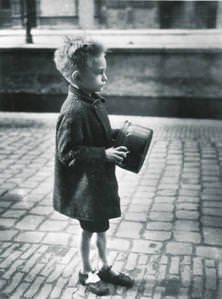
The most affected by deprivation were, as it is easy to imagine, the children. The average weight of a fourteen-year-old was 41 kilos in 1940, but only 37 at the end of the war, and the average height had fallen by two centimetres. The peers had lost as much as 7 kilos and 6 centimetres. Typhoid and diphtheria were frequent, almost all women had interrupted their menstrual cycle, men had become powerless. The corpses were accumulating in churches without anyone having the strength to bury them. People die in the street ", was the message that the Dutch Resistance sent to London trying to get some help. We cannot go on like this.
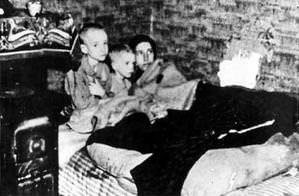
The suffering was aggravated by the bombing. From the Netherlands, the Nazis threw the V2s on Britain, deposits and launch bases were deliberately placed in the vicinity of inhabited towns, the Allied attacks, although they tried to be precise, claimed more victims among Dutch civilians than the British had been killed by Hitler's reprisal weapons across the North Sea.
The resentment of the Dutch towards the allies who did not arrive was just as strong as the hatred they now felt for the occupying Germans. People were furious ", remembers Theodore Wempe," but why not arrive? But still on 27 March 1945, Ike replied to the dismayed Dutch Prime Minister in exile, that the only way to help Holland was to end the war quickly.
In the Netherlands, meanwhile, hunger, allied bombs and German reprisals continued to kill. On 1 April, the soldiers of the First Canadian Corps freed the city of Enschende, finding 12 civilians hanging from the trees in front of the town hall, still hot: the Germans had hanged them on approaching the wagons. Five days later, in Zutphen, the British troops found the corpses, naked and tortured, of ten civilians on the way into the town. The following day, the German commander, General Blaskowitz, ordered the destruction of locks and canals to obstruct the allied advance. The dam guarding the Wieringen polder, the Dutch granary, was blown up by flooding 20 thousand hectares of farmland, which added to the 230 thousand already flooded previously.
One of the most extraordinary episodes of the war, still almost unknown, began on 4 April 1945 on the island of Texel, off the Dutch coast. In his garrison, belonging to the 882nd battalion of the Wehrmacht, there were 550 Georgians caught on the eastern front. After being rescued, they killed all the Germans who found three of them, led by a leader of the local Resistance, went up on a boat and reached the British coast, landing in Cromer, Norfolkshire, on 6 April. They were greeted with very little enthusiasm by the British, after a summary interrogation, they were sent to a concentration camp with their Dutch companion. No action was taken to rescue the mutinates of Texel and the civilian population of the island, who were so quickly and brutally exterminated by the Germans by Hitler's personal orders. We had risen up against the Nazi tyranny,"recalls one of the three inmates in England," but instead of receiving help we were betrayed. On 20 April, German troops had reason for the last pockets of resistance on the mutinated island: 117 Dutch civilians, more than 500 Georgians and 800 German soldiers had died unnecessarily just a week before Hitler's suicide.
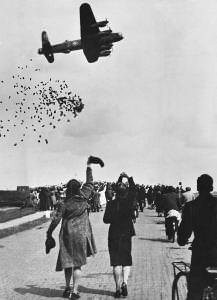
The agony of the Netherlands was partially alleviated by the arrival of food aid from neutral Sweden (the "Swedish bread") and the Manna and Chowhound operations, launched by the Anglo-Americans in agreement with the German governor Arthur Seyss-Inquart, now aware of the end, and eager to fathom the winners who hanged him in Nuremberg: From April 29th, the Lancasters and Halifaxes of the RAF, together with the Liberators and Fortresses of the USAAF, were allowed to fly on Dutch territory still occupied by the Germans, to launch you food supplies; in about ten days, more than 11 thousand tons of food (including thousands of rations K)"delivered" in this way to the exhausted Dutch.